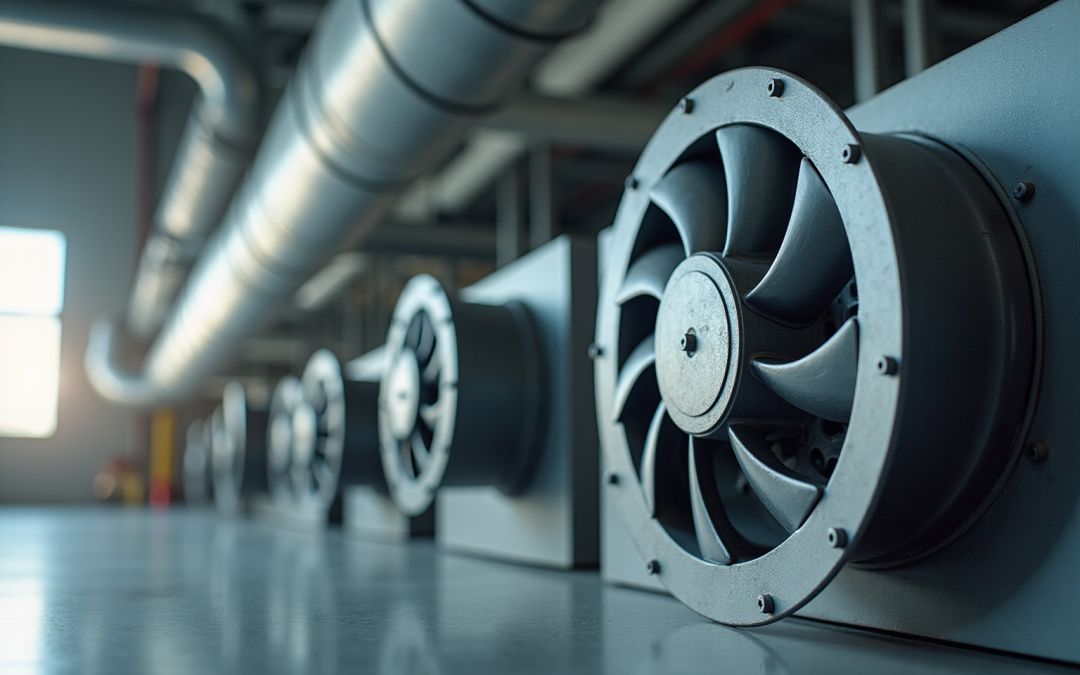Overview
A static pressure fan is engineered to maintain consistent airflow against resistance in HVAC systems, which is essential for effective air circulation and optimal indoor air quality. These fans are specifically designed to overcome obstacles such as filters and ducts, ensuring energy efficiency and comfort. Proper design and maintenance are critical to avoid increased energy consumption and equipment wear.
The significance of static pressure fans cannot be overstated; they play a vital role in enhancing indoor environments. By addressing airflow resistance, these fans contribute to improved air quality and reduced operational costs. Thus, investing in high-quality static pressure fans and adhering to best practices in their design and upkeep is imperative for any HVAC system.
In conclusion, understanding the functionality and maintenance of static pressure fans is crucial for maximizing their benefits. Implementing effective strategies will not only enhance system performance but also ensure long-term reliability and efficiency.
Introduction
Understanding the intricacies of HVAC systems is essential for ensuring optimal air quality and energy efficiency. At the heart of this complexity lies the static pressure fan. These specialized fans are engineered to maintain consistent airflow in the face of resistance, making them indispensable in environments where air must navigate through filters and ducts.
As engineers delve into the world of static pressure fans, they confront a pivotal question: how can they harness the power of these devices to enhance system performance while minimizing energy consumption?
This article explores the critical aspects of static pressure fans, shedding light on their functionality, importance, and real-world applications in HVAC settings.
Define Static Pressure Fan and Its Functionality
To understand what is a static pressure fan, it’s important to know that a fixed airflow fan is specifically engineered to maintain consistent airflow against resistance in systems such as HVAC ducting. Unlike standard blowers that prioritize airflow volume, what is a static pressure fan refers to fans designed to overcome the challenges posed by filters, ducts, and other components. This capability is crucial for ensuring effective air circulation, which ultimately helps sustain optimal temperature and air quality levels.
HVAC units are classified as low (below 2 inches of water column) or high (above 2 inches of water column) based on their operational atmospheric force, a key aspect for understanding fan dynamics in HVAC applications. To understand what is a static pressure fan, it’s important to note that static force is measured in inches of water gauge (in. wg), indicating what is a static pressure fan and its ability to push air through various barriers.
For instance, high-capacity HVAC units typically operate at levels exceeding 2 inches of water column, which is vital for large commercial buildings where airflow resistance is significant. Experts assert that understanding what is a static pressure fan is essential for improving operational efficiency and energy conservation. As HVAC professionals note, “Improper design or installation can lead to increased energy consumption and equipment wear.”
Practical applications demonstrate how fixed airflow devices can effectively minimize air resistance, ensuring that HVAC systems operate efficiently and maintain comfort in indoor environments. In commercial buildings, nearly 35% of the average energy bill is associated with HVAC systems, highlighting the financial impact of constant force on HVAC efficiency. Regular maintenance, such as changing air filters every 90 days, is recommended to ensure adequate indoor air quality and promote the efficient operation of fans.
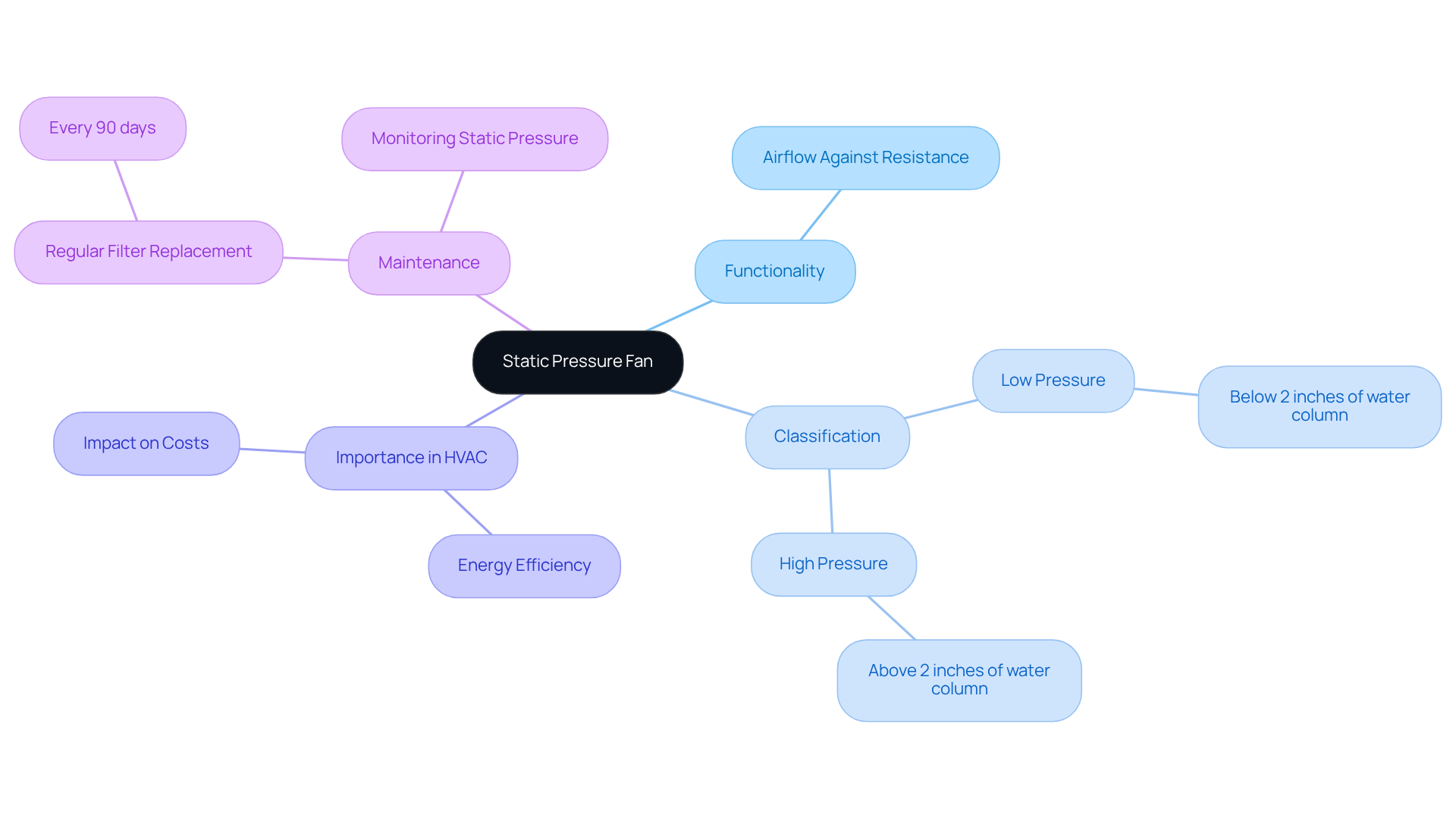
Explain the Importance of Static Pressure in HVAC Systems
Static force plays a crucial role in HVAC setups, as it directly influences airflow distribution and operational efficiency. Elevated atmospheric force can diminish airflow, leading to discomfort and uneven temperature spread within a space. Conversely, low ambient force may indicate that the system is not circulating air effectively, resulting in increased energy usage and operational costs.
Engineers must meticulously compute and oversee fixed force, which is related to what is a static pressure fan, to ensure optimal performance. This involves selecting suitable fixed force blowers, which are examples of what is a static pressure fan, capable of managing the specific resistance levels of their systems. Achieving this balance is essential for enhancing energy efficiency and maintaining indoor air quality.
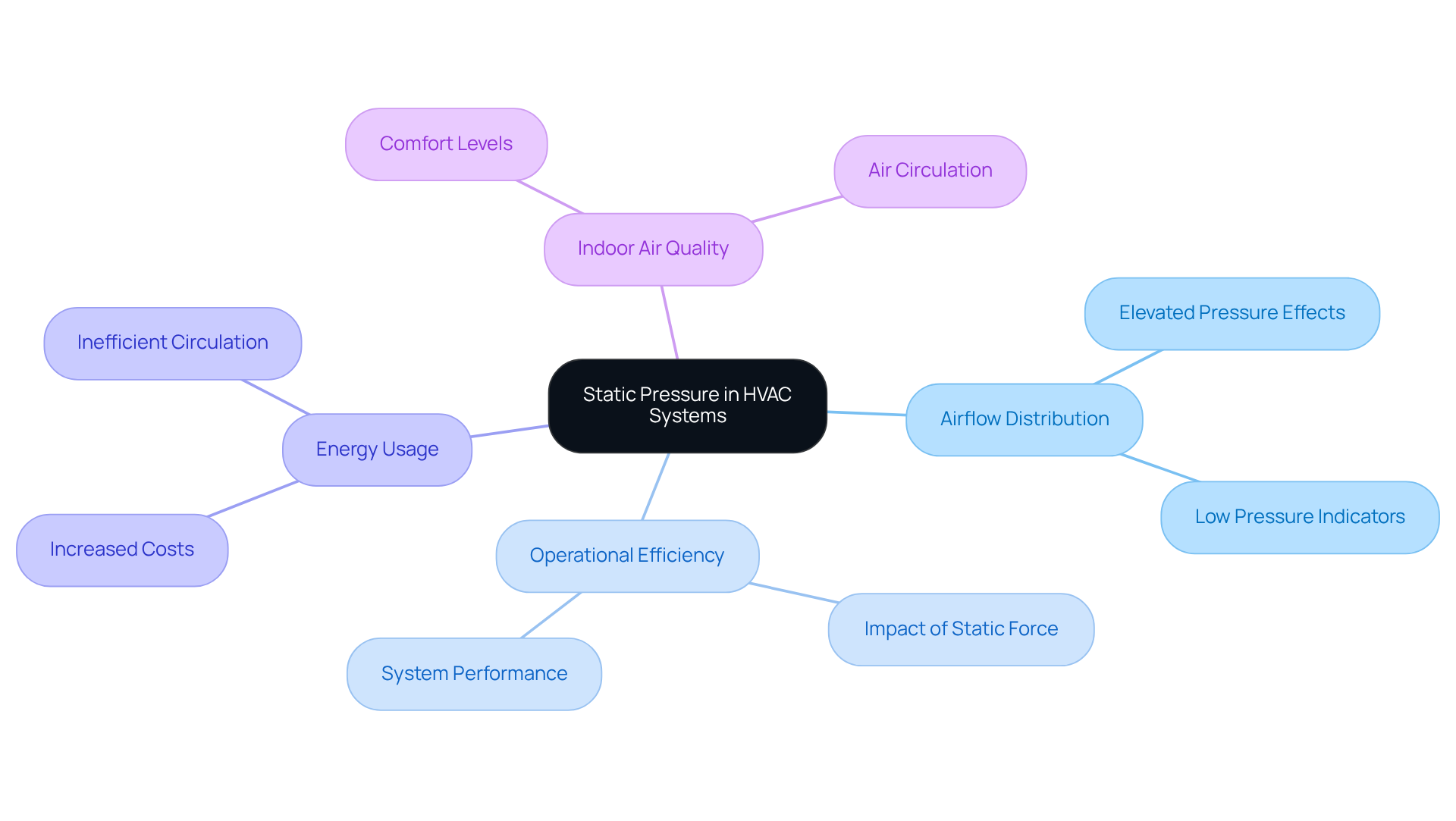
Detail Key Characteristics and Components of Static Pressure Fans
Constant airflow devices stand out due to their capacity to generate substantial resistance while maintaining airflow efficiency. Key components such as robust motors, optimized blade geometries, and advanced materials significantly enhance both durability and performance. The meticulous engineering of impellers, housings, and motors is aimed at minimizing losses and maximizing airflow against resistance. These devices come in various configurations, including axial and centrifugal designs, each specifically tailored for distinct applications.
For instance, in HVAC setups, knowing what is a static pressure fan is essential as these stationary airflow devices excel in environments with considerable resistance, effectively managing airflow through filters and other barriers. Performance metrics reveal that a 10% increase in airflow necessitates a 33% increase in horsepower, highlighting the intricate relationship between airflow and power consumption. Furthermore, as Johann Tang, a Product Specialist at Oriental Motor, aptly notes, “When airflow rises, tension drops; and when tension rises, airflow declines.” Understanding these characteristics empowers engineers to select suitable devices that align with the unique requirements of their HVAC systems, ensuring peak performance and durability.
Moreover, understanding what is a static pressure fan and its potential impact on components like blower motors and compressors is crucial for guaranteeing reliability and efficiency.
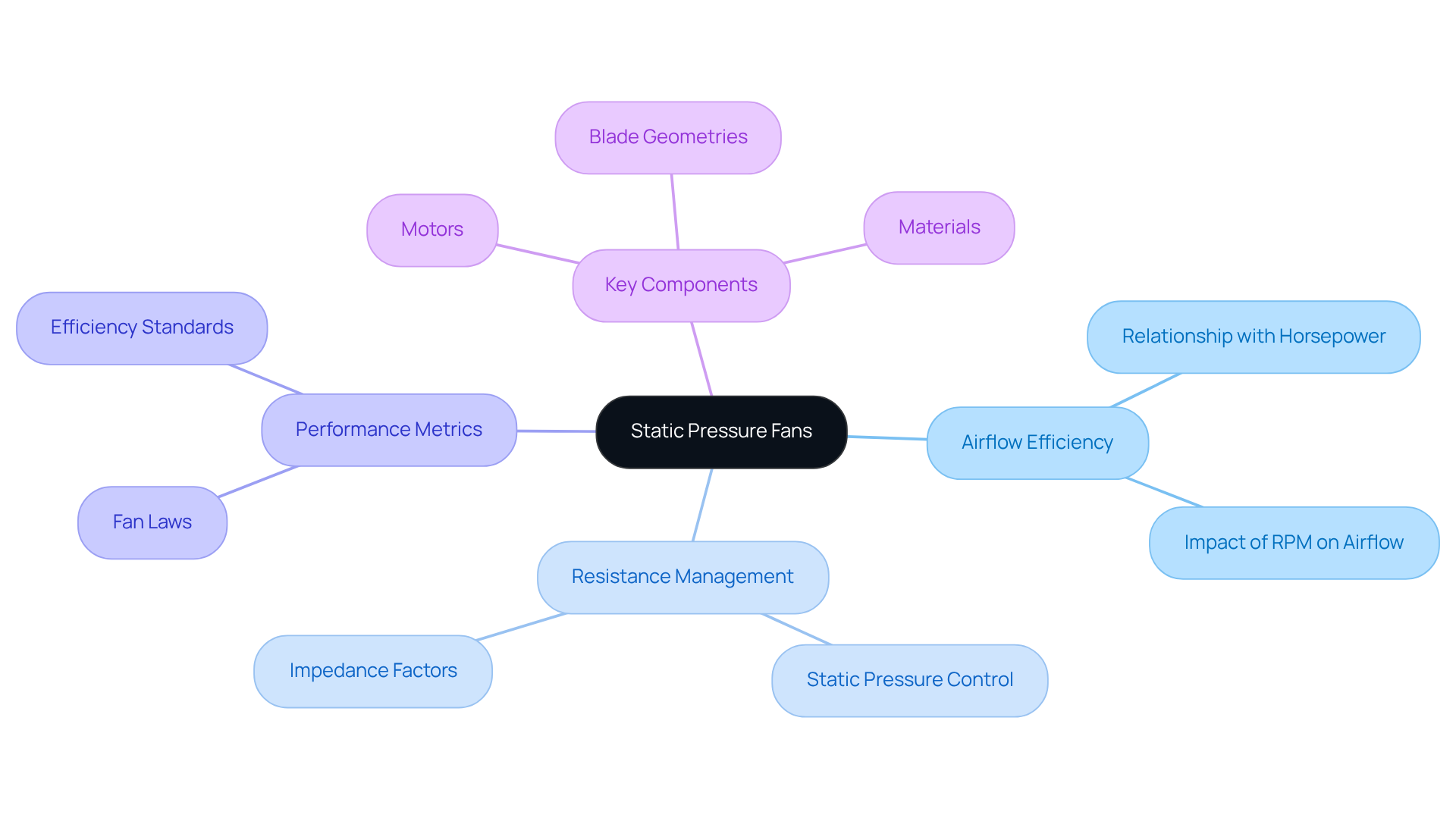
Provide Examples of Static Pressure Fans in HVAC Applications
Static airflow devices play a crucial role in various HVAC applications, encompassing commercial buildings, industrial sites, and residential environments. In commercial settings, characterized by extensive ductwork, these fans are vital for ensuring that conditioned air effectively reaches all areas, overcoming resistance from filters and bends in the duct system. HVAC experts emphasize that maintaining ideal equilibrium is essential for energy efficiency and indoor air quality; incorrect equilibrium can lead to increased energy consumption and discomfort. For instance, low ambient resistance can result in higher energy usage due to prolonged AC operating durations, underscoring the importance of effective resistance management.
In industrial environments, stationary airflow devices are indispensable for regulating air quality, particularly in areas with elevated particulate concentrations. They efficiently propel air through filtration systems, ensuring a clean and safe atmosphere for workers. Case studies illustrate their effectiveness in applications such as drying processes and pneumatic transport, where high inertial blowers are necessary to counter significant resistance and maintain operational efficiency. The case study titled ‘Effects of Low Stationary Force’ further elucidates the practical implications of low stationary force, demonstrating its adverse impact on system performance.
Residential applications also benefit from fixed airflow devices, particularly in high-efficiency heating and cooling systems. These devices contribute to maintaining consistent airflow, enhancing comfort and energy efficiency. Regular HVAC maintenance can prevent numerous airflow issues and improve performance, ensuring that these blowers operate at peak efficiency.
The market share of fixed airflow devices is notably significant in commercial HVAC systems, where their ability to regulate airflow and dynamics is critical for optimal performance. Manufacturers such as Gagner-Toomey Associates, the largest producer of standard and custom air-movers worldwide, are at the forefront in producing high-quality products, including what is a static pressure fan. Their commitment to excellence guarantees that engineers have access to reliable products that enhance system performance and air quality management.
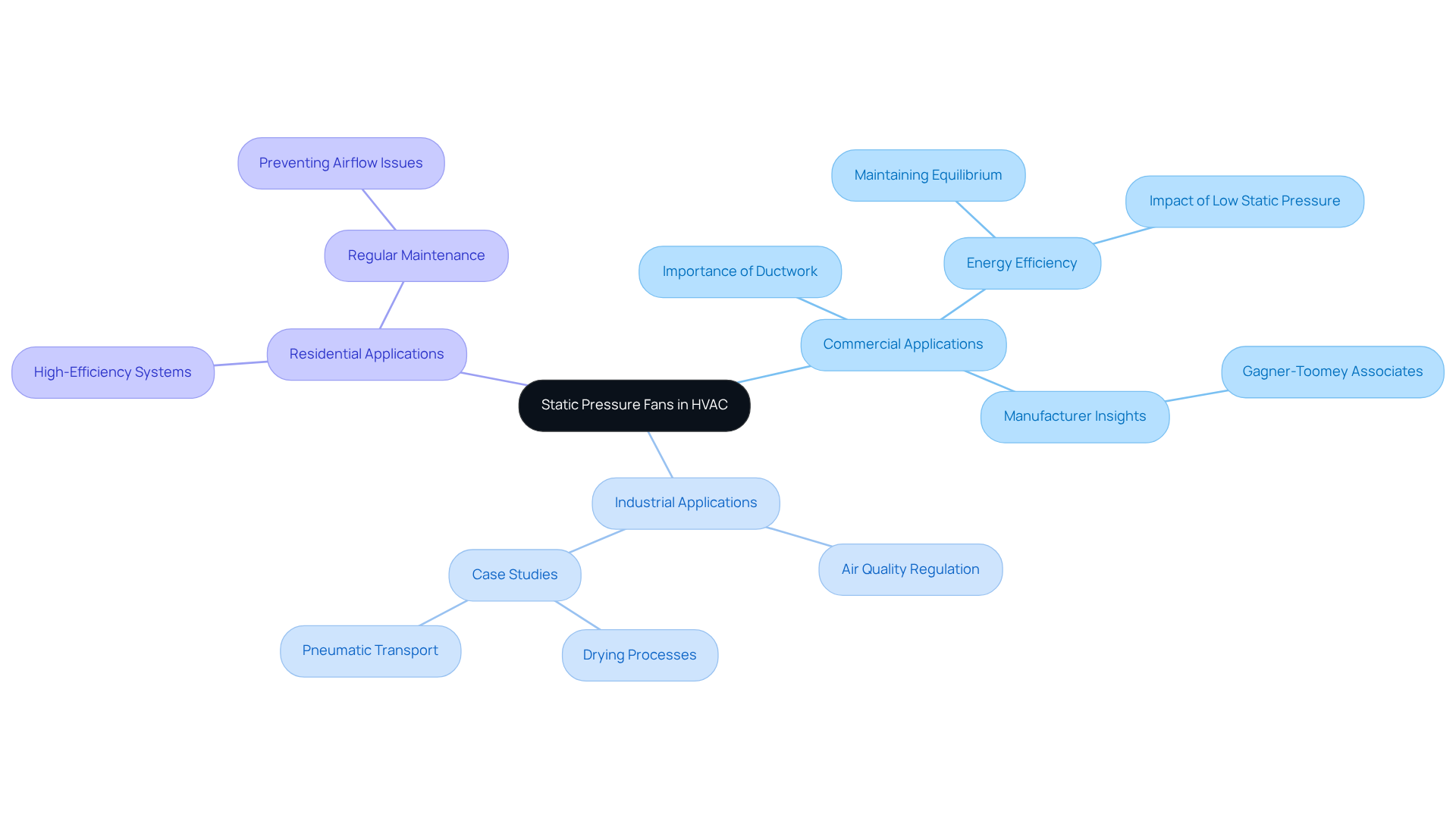
Conclusion
Understanding the nuances of static pressure fans is essential for engineers and HVAC professionals alike. These specialized devices are designed to maintain consistent airflow against resistance, making them integral to the efficiency and effectiveness of HVAC systems. By grasping the significance of static pressure, one can appreciate how these fans contribute to optimal air circulation, comfort, and energy conservation in various environments.
The article delves into the functionality, importance, and characteristics of static pressure fans, shedding light on their critical role in HVAC applications. Key insights include:
- The distinction between low and high static pressure classifications
- The impact of static force on airflow distribution
- The importance of selecting appropriate fans for specific resistance levels
Practical examples illustrate how these fans operate in commercial, industrial, and residential settings, emphasizing their necessity in ensuring indoor air quality and energy efficiency.
Ultimately, the message is clear: static pressure fans are not just components of HVAC systems; they are vital players in optimizing performance and sustainability. Engineers and professionals are encouraged to prioritize the selection and maintenance of these fans to enhance system reliability and efficiency. By doing so, they contribute to improved air quality and reduced energy costs, underscoring the broader implications of effective HVAC management.
Frequently Asked Questions
What is a static pressure fan?
A static pressure fan is a type of fixed airflow fan specifically designed to maintain consistent airflow against resistance in systems like HVAC ducting, overcoming challenges posed by filters, ducts, and other components.
How does a static pressure fan differ from standard blowers?
Unlike standard blowers that prioritize airflow volume, static pressure fans are engineered to ensure effective air circulation by overcoming airflow resistance, which is crucial for maintaining optimal temperature and air quality levels.
How is static pressure measured in HVAC applications?
Static pressure is measured in inches of water gauge (in. wg), indicating the fan’s ability to push air through various barriers in the HVAC system.
What are the classifications of HVAC units based on static pressure?
HVAC units are classified as low (below 2 inches of water column) or high (above 2 inches of water column) based on their operational atmospheric force.
Why is understanding static pressure fans important for HVAC efficiency?
Understanding static pressure fans is essential for improving operational efficiency and energy conservation since improper design or installation can lead to increased energy consumption and equipment wear.
What percentage of energy bills in commercial buildings is associated with HVAC systems?
Nearly 35% of the average energy bill in commercial buildings is associated with HVAC systems, underscoring the financial impact of static pressure on HVAC efficiency.
What maintenance is recommended for static pressure fans in HVAC systems?
Regular maintenance, such as changing air filters every 90 days, is recommended to ensure adequate indoor air quality and promote the efficient operation of fans.

